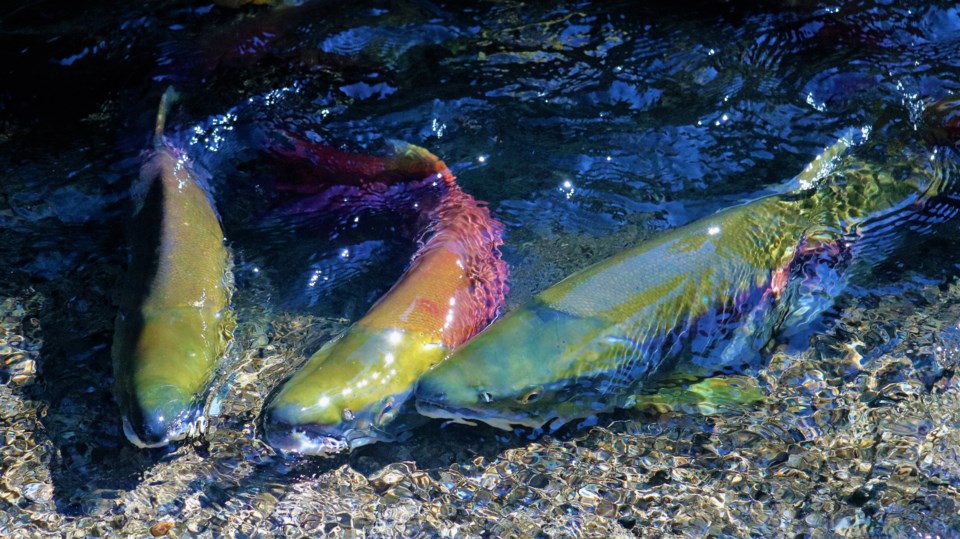British Columbia is Canada’s most biodiverse province. Unsurprisingly, it’s also home to the country’s highest number of species-at-risk—a shocking 1,807 as of 2019. Clearly, the province—and those of us who live here—need some kind of protection in place for these plants and animals. Sadly, other than a few unenforceable token provisions of the Wildlife Act that apply only to nesting animals, there are not now, nor have there ever been, such protections. It’s a strange and embarrassing state of affairs for a province fond of flaunting its “green” credentials.
So, to preliminarily answer the question posed by the title of this column: maybe. As in, only if the province’s rapacious and overentitled mining and forestry sectors can be reined in. And since the long-odds on that are as low as anything can be in B.C., it doesn’t look good. That being said, however, hope springs eternal, and the Jan. 31 closing of public comment on a draft of the B.C. NDP’s much ballyhooed Biodiversity and Ecosystem Health Framework is at least a step in the right direction. But before we decide to either applaud or walk away in disgust, let’s take a look at what the government has tried to achieve in the past and what it’s looking to do here.
Although the 2017 election now seems like ancient history, this was when the NDP finally beat out the loathsome BC Liberals (i.e., the candy-coated band of arch-conservatives under Christy Clark, now known as BC United) to come to power as a minority government supported by the Green Party. One of its key campaign promises at the time was to finally enact species-at-risk legislation, something almost every other province and territory in Canada already had. John Horgan’s government dutifully engaged stakeholders across all sectors in a consultation process. People I knew working in the Ministry of the Environment told me they were set about in the process and “big changes” were finally coming. But in the end, the rancour, lobbying and fractious nature of government-capturing industries like oil and gas, forestry, and mining caused the province to basically throw up its hands and scrap the whole thing. After a huge expenditure of time, money and manpower, precisely zero was accomplished other than some messy department reorganizations.
Once the government came to power as a majority outfit in 2020 besieged by logging and pipeline protests, a new direction was charted, with the idea of a more overarching approach that would not only address old-growth loss, but also gather in endangered species, invasive species, wetland loss and a dozen other interrelated problems. This is the aforementioned Biodiversity and Ecosystem Health Framework, a result of the Old Growth Strategic Review, which included prioritizing ecosystem health and biodiversity as a second recommendation in its groundbreaking 2020 report (“Declare the conservation and management of ecosystem health and biodiversity of British Columbia’s forests as an overarching priority and enact legislation that legally establishes this priority for all sectors”). And if you’re one of the thousands who went online to comment on the draft, you’ll be familiar with some of its tenets.
The Framework’s purpose is to provide (pay close attention to the government-speak gobbledy-gook) “a vision and actions to align ongoing initiatives to enable the conditions for a stepwise change in how B.C. manages land and water, to support ecosystem, community and economic resiliency.”
Intended to advance transformative change across all sectors to support all ecosystems, what is being proposed, essentially, is a shift away from a focus on individual resource use as a priority subject to constraints, to a focus on holistic ecosystem health as the priority. This is as it should be and most laudable, however, it seems unrealistic given B.C.’s history of kowtowing to industry. “We’ve been on this ride with this government before, and we know logging and mining companies will again be lobbying hard to protect the status quo,” said Charlotte Dawe, conservation and policy campaigner for the powerful NGO Wilderness Committee. “The BC NDP is promising to do better, promising this time will be different, but they need to put this framework into action and truly put biodiversity ahead of corporate interests.”
Indeed, the Old Growth Strategic Review had a three-year timeline that came and went, along with species like the spotted owl and southern mountain caribou which, if they aren’t already extinct, are dead species walking.
The Wilderness Committee and other groups have been advocating for a species-at-risk law in this province for more than two decades, and tens of thousands of our fellow citizens have followed suit via petitions. And yet some fear we are now no closer given the draft Biodiversity and Ecosystem Health Framework, according to all reviews, currently misses the mark by playing to vagaries, lacking any indication of a strong law that would be enforceable, free of loopholes, and account for cumulative effects on at-risk species while also respecting the sovereignty of Indigenous titleholders. The finalized framework—a whole of government, whole of society, open and transparent process—along with an implementation plan is due this spring. Will it actually and finally protect B.C.’s almost 2,000 endangered species?
The real answer is that we’ll believe it when we see it.
Leslie Anthony is a biologist, writer and author of several popular books on environmental science.




